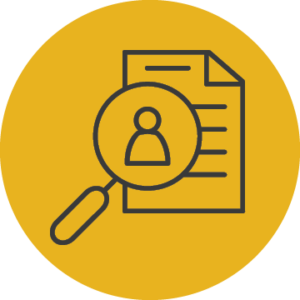
Opinions expressed in AGB blogs are those of the authors and not necessarily those of the institutions that employ them or of AGB.
On a crisp fall morning, the president of a mid-sized university received an urgent call: A ransomware attack had paralyzed the institution’s IT systems. Critical data—student records, payroll, even admissions files—were inaccessible. Across campus, faculty struggled to manage classes and panic rippled through the community as news of the attack spread. By noon, the university’s leadership team gathered, scrambling to develop a response plan.
The board, caught off guard, grappled with their role in the unfolding crisis. Questions loomed: Who should take charge? What resources were needed? How could they protect the institution’s reputation and ensure its long-term stability?
This scenario is not unique. In today’s higher education landscape, crises are no longer rare occurrences but an unfortunate reality. From student protests and public health emergencies to cybersecurity threats and financial challenges, governing boards and campus leaders must be ready to navigate an ever-increasing array of crises with clarity and resolve.
Recognizing this urgency, AGB has developed three comprehensive toolkits to equip boards with the knowledge and tools they need to lead effectively during such critical moments. These resources, adapted from Terrence MacTaggart’s book Crisis Leadership for Boards and Presidents, are designed to help boards understand the dynamics of crises, prepare proactively, and respond decisively when the unexpected strikes.
Are you and your board prepared for the next crisis?
Create Awareness Before It is Needed
The first step in managing a crisis is understanding it. Understanding Crises: A Crisis Leadership Toolkit is a resource designed to provide boards and campus or system leaders with a deep, fundamental understanding of how crises emerge, evolve, and impact institutions.
This toolkit includes:
- Frameworks for analyzing crises which help boards break down the anatomy of crises, from initial triggers to long-term impacts.
- Resources to help boards evaluate and navigate crisis response pathways.
- Case studies that offer real-world examples of how crises have affected institutions, providing valuable insights into both successful and unsuccessful crisis management strategies.
With this toolkit, boards will gain the knowledge needed to engage in proactive discussions about potential crises and ensure they are all speaking the same language before a crisis strikes.
Create Clear Protocols and a Well-Developed Plan
Effective crisis management starts before a crisis begins. Preparing for Crises: A Crisis Leadership Toolkit equips boards and leaders with tools and strategies to prepare or implement in advance, so they are not caught off guard when a crisis hits.
Key components of this toolkit include:
- Risk identification tools, including sample risk registers, that help boards and senior leaders assess potential vulnerabilities, ensuring they are aware of the unique risks their institution faces.
- A crisis readiness checklist that ensures the board and leadership have established the necessary protocols, communication plans, and leadership frameworks before a crisis hits.
- Capacity-building exercises to ensure that board members are equipped to make critical decisions under pressure, enhancing their ability to lead effectively during a crisis.
By using this toolkit, boards can shift from a reactive posture to a proactive one, setting up their institution, system, or foundation for a swift, coordinated, and effective crisis response.
Act Decisively as a Crisis Unfolds
When faced with a crisis, boards should move promptly and with strategic intent. Initial Crisis Response: A Crisis Leadership Toolkit is built for those crucial first hours and days when decisions made by the board and administration can have long-term consequences.
This toolkit includes:
- Decision-making frameworks that help boards balance short-term actions with long-term institutional goals.
- Tools to support the president and board leaders, including a crisis litmus testing tool and a crisis diagnosis checklist.
- Communication strategies for addressing internal and external stakeholders with clear and transparent messaging during a crisis.
This toolkit ensures that boards are ready to act, with the right information and tools at their fingertips to minimize damage and steer the institution, system, or foundation toward recovery.
Why Crisis Management Is More Important Than Ever
In today’s higher education landscape, crises are becoming more frequent and more complex. The social, political, and economic pressures that institutions face are compounded by rapidly shifting public expectations, making it essential for governing boards to be prepared. Whether dealing with a sudden enrollment drop or managing the fallout from a public scandal, boards need to have the skills, resources, and policies in place to navigate through the storm.
AGB’s crisis management toolkits are designed to ensure that your board is not just prepared for the inevitable but capable of leading your organization through it with confidence. We encourage every higher education board to explore these new resources and begin integrating them into your governance practices.
AGB used AGB Board BotTM and other AI tools in the development of this blog post to help summarize recommendations from our extensive library of content.
RELATED RESOURCES

Tools and Toolkits
Understanding Crises: A Crisis Leadership Toolkit

Tools and Toolkits
Initial Crisis Response:
A Crisis Leadership Toolkit

Tools and Toolkits
Preparing for Crises: A Crisis Leadership Toolkit

